Like the rest of Lenovo's Legion lineup from this year, the T730 is a complete redesign from last year's Legion Y720 Tower, and there are some pros and cons to the new design. It now has a transparent panel on the side so you can see the RGB lighting inside of the unit, but it has fewer USB ports on the front and it's harder to repair (to be clear, it's not hard to take apart, but last year's model has a tool-less design).
The unit that Lenovo sent me includes an Intel Core i7-8700K CPU and Nvidia GeForce GTX 1060 graphics. I found this to be more than sufficient for almost any task I threw at it (more on that in the performance section), but if that's not enough, you can get this thing specced out with a Core i9-9900K CPU and Nvidia GeForce RTX 2080 graphics. And no, there's no in-between.
In my time with it, I found that the Legion T730 is an excellent machine for the price. Here's our review.
Specs
| CPU | Intel Core i7-8700K (3.7GHz, up to 4.70GHz with Turbo Boost, 12MB Cache) |
|---|---|
| GPU | Nvidia GeForce GTX 1060 (6GB DDR5) |
| Storage | 128GB PCIe SSD + 1TB 7200 RPM |
| Memory | 1 x 16GB DDR4-2666 (Supports up to 64 GB) |
| Power supply | 450W |
| Cooling | 65W air cooling |
| Ports | (6) USB 3.1 (2) USB 2.0 (1) RJ-45 (1) Headset (1) Audio-out (1) Microphone In (1) HDMI (NVIDIA GTX 1060) (3) DisplayPort (NVIDIA GTX 1060) (1) DVI (NVIDIA GTX 1060) |
| Audio | Dolby Atmos Effect and Sound Radar |
| Body | 7.26x16.06x14.29" / 184.5x408x363mm, 26.4 lbs (12kg) |
| OS | Windows 10 Home |
| Color | Raven Black |
| Price | $1,429.99 |
As I mentioned, there's a model with a Core i9-9900K and a GeForce RTX 2080 GPU, and that will run you $2,359.99. It comes with a 625W power supply and 130W liquid cooling, and the rest is the same.
Design
The Lenovo Legion T730 is a big change from last year's Legion Y720 Tower (yes, the naming scheme changed as well). A big selling point last year was the ability to repair and upgrade without any tools, and that concept has been abandoned this year. The side panel can be removed with two thumbscrews, and pretty much everything inside other than the memory is attached with Philips-head screws.

I don't really have a problem with this idea. After all, if you're taking apart your PC, you probably have a screwdriver handy. It's just a notable design change, since it was a headlining feature last year.
Another bit that I want to add about upgradeability is that there are only two RAM slots. This machine does support 64GB DDR4, but it only ships with 16GB. If you want to max it out, you're going to need to toss the memory that it comes with and get two 32GB sticks.

One design change that I definitely do not care for is that there are only two USB Type-A ports on the front of the unit, whereas there were four last year. The two ports are both USB 3.1 Gen 1, and to be clear, last year's Y720 had two of its front port as USB 2.0. I don't mind ditching USB 2.0, but I'd prefer to have four USB 3.1 ports rather than getting rid of the other two entirely. Ports on the front of the PC are useful for plugging in peripherals, and if you've got an Xbox controller and a USB headset plugged in already, you don't have room for anything else.
Lenovo also ditched the SD card slot, keeping only a 3.5mm headset port and a 3.5mm microphone jack.

You'll find another six USB Type-A ports on the back, two of which are USB 2.0 and the other four are USB 3.1 Gen 1, which supports 5Gbps speeds. There's also an RJ-45 Ethernet port and a 3.5mm audio out jack. As part of the GTX 1060 graphics card, there are three DisplayPorts, HDMI, and DVI.

Below that, there's a strap that's designed for cable management. Just open the strap and close it over your cables. Personally, I'm an under-the-desk guy when it comes to towers, so all of my cables are going up through my desk anyway.

There's a handle on top of the machine, making it easy to carry around. The whole rig weighs in at just over 26 pounds, so you could take it with you if you wanted to. It's fairly light for what it is.
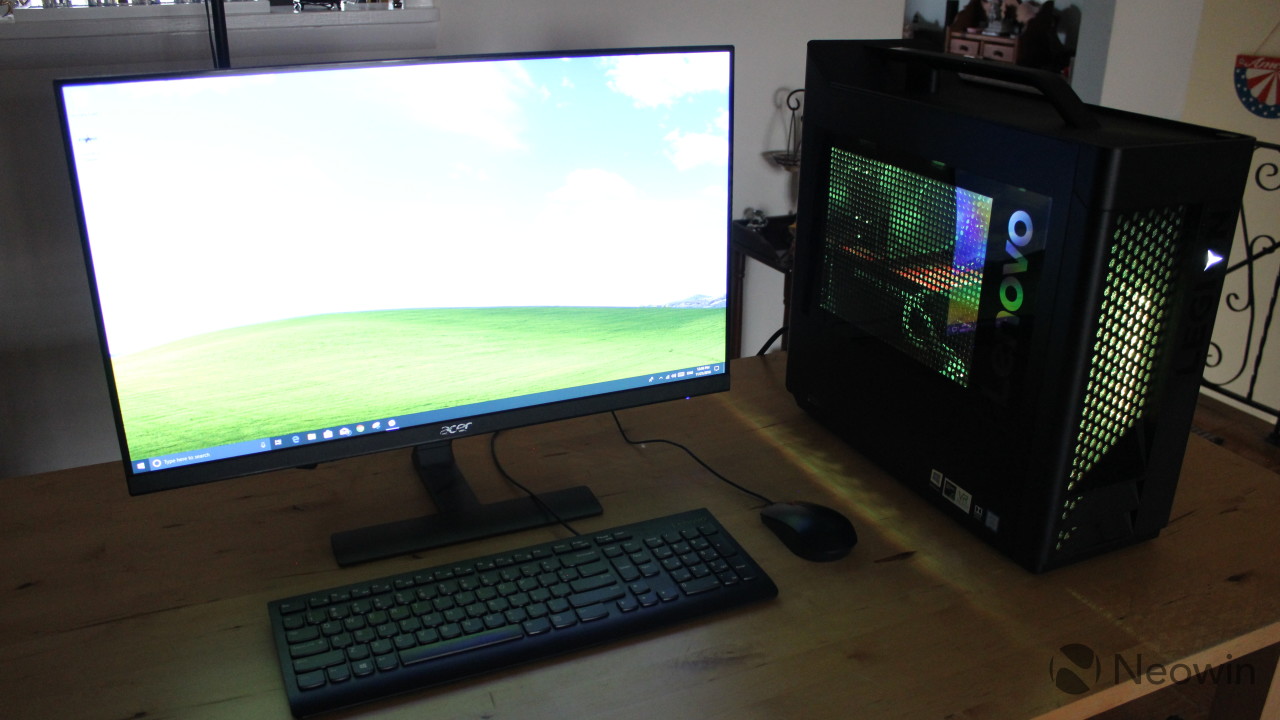
The coolest part of the design is that there's a transparent panel on the side and a grill on the front that allows you to see the RGB lighting inside of the machine. It's definitely one of the more fun design features. When you turn the lights off in the room, it's almost like there's a light show.
Performance and price
My main desktop PC has an Intel Core i7-7700, an Nvidia GeForce GTX 1080, and 48GB DDR4 memory. Switching to a GTX 1060 and 16GB RAM did not seem appealing, but I was pleasantly surprised with the performance. The Legion T730 took almost everything that I threw at it, only choking a bit when I tried to edit 4K 60fps video.
The Core i7-8700K CPU that's included is a hexa-core CPU with a 95W TDP, whereas the last generation was quad-core. The 'K' suffix means that it can be overclocked, and you can feel the boost in performance.
If you're keeping track of whether you should build your own PC or buy one, the CPU costs about $370, and you'll also have to spend about $100 on a motherboard. On top of that, the 16GB DDR4 2666 module will cost you about $130, and Nvidia is selling the GTX 1060 for $299. You can get a 128GB PCIe SSD for under $40 (you might end up wanting a larger SSD though), and a 1TB HDD for about $50. That all adds up to just under $1,000, and it doesn't include the bells and whistles that come with a Lenovo pre-built PC.

The main game that I played on the Legion T730 was Forza Horizon 4, since that's the thing I'm into right now, and it handled just fine at 4K 75fps. I also played games like Star Trek Online and Quantum Break, and I jacked up the resolution and frame rate to the max every time. Monitors connected were a 27-inch 1080p Acer Nitro, and a 27-inch 4K LG display, both of which are connected via DisplayPort.
Of course, I used it for work as well, as this was my main desktop PC for a few weeks. That means some light Photoshop work, editing videos in Premiere Pro, and even compiling videos in Adobe Media Encoder while editing more videos in Premiere. As I said earlier, it handled like a dream in most cases, except when editing 4K 60fps videos, and especially when editing and compiling 4K 60fps videos at the same time. Compiling a 20-minute, 4K 60fps video takes about an hour, whereas it takes about a half hour on my regular PC.
For benchmarks, I used PCMark 8, which has three tests: Home, Creative, and Work. The Home test checks common tasks like web browsing, video chat, casual gaming, and more.


As you can see, the Legion T730 performs quite well in comparison to the rest of the market. Next up is the Creative test, which checks GPU-intensive tasks like video editing and mainstream gaming.
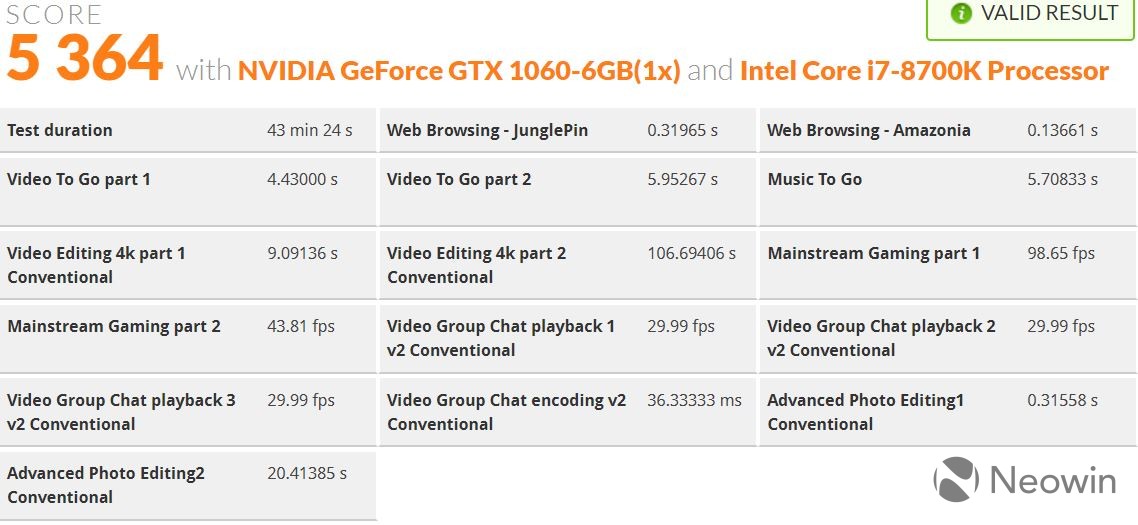

Finally, the Work tests checks productivity-related tasks like writing and spreadsheets.


The Lenovo Legion T730 scores great on benchmarks, but still, all that really matters is real-world performance. And I can say that I was completely satisfied with performance while using it for everything for a few weeks.
Software
At some point over the last year or so, Lenovo combined all of its first-party software into an app called Lenovo Vantage. Previously, there was an app for updating drivers, Lenovo Nerve Center for changing hardware settings, and so on. Now, you can use Vantage for driver updates, changing the RGB lighting, overclocking the CPU, and so on.

Just as you'd expect, there are a ton of options in the lighting department. You can choose between six preset colors, or pick a custom color. You can set the lights to flicker on and off, 'breath', 'wave', and more.

Another thing that's coming to the Lenovo Vantage app is Lenovo's new Legion Game Store. The company says that it will thoroughly screen games, so you won't have to pay for "half-finished, half-hearted" demos. The Legion Game Store is online as well, so you can play the games you purchase on all of your devices, not just Legion gaming PCs.
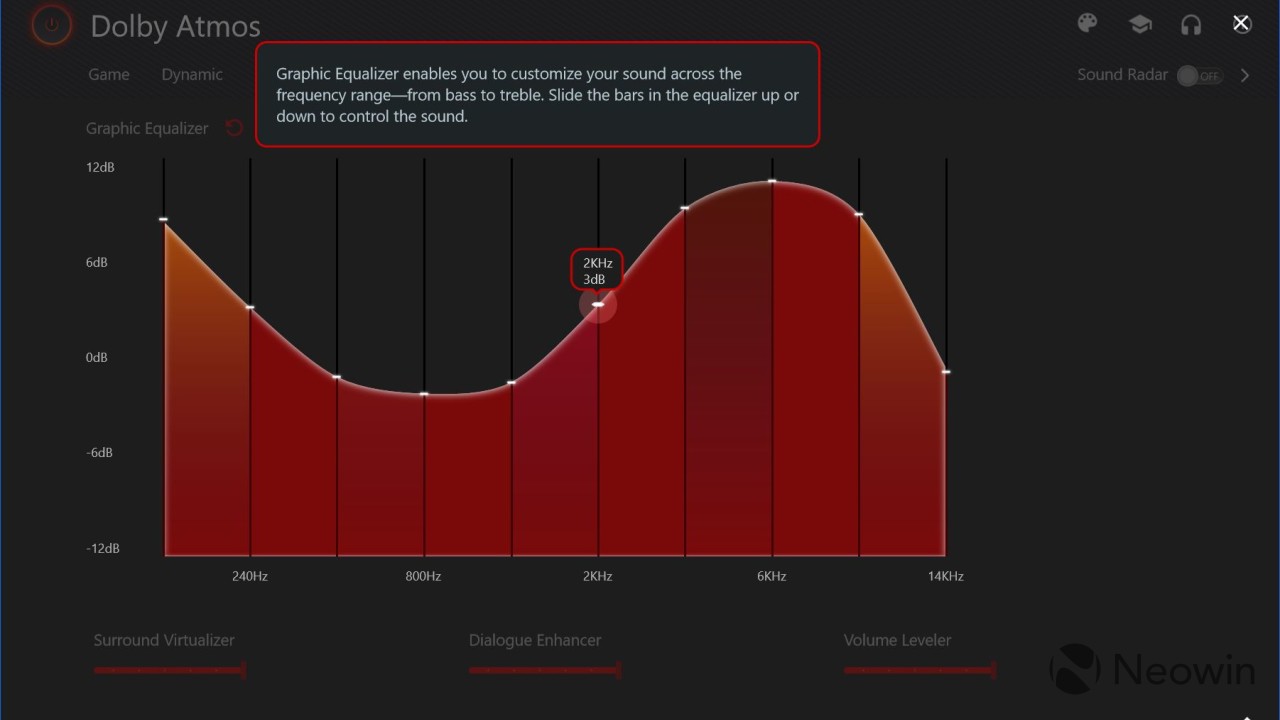
The Legion T730 also has Dolby Atmos for anything connected to the 3.5mm audio jack (sorry USB headset users), and that means that there's a Dolby Atmos app. You can set it to optimize for movies, music, games, and voice, or you can give it a custom setting. There's also a Dynamic option, which tries to decide what you're doing and optimize for it.
One other app that's there that you'll want to be aware of is Nvidia GeForce Experience. This is where you'll be able to get the latest Nvidia GeForce drivers.
Mouse and keyboard
Like pretty much any gaming PC, the Legion T730 comes with a mouse and a keyboard. They seem to be the same units that came with the Legion Y720 Tower last year.

The peripherals are wired, which is what you'll want in a gaming PC. After all, even a split second delay caused by a Bluetooth connection is too much when playing games, and if the connection drops, that could cause real issues.
Both of them are very basic, and if you're a serious gamer, you're probably going to want to invest in a new mouse and keyboard. In fact, the keyboard isn't even backlit, so you can forget about any kind of RGB lighting. In general usage, I found typing on it to be OK, but the keys are a bit too resistant to be very comfortable.
Last year, when I reviewed the Legion Y920 Tower, it came with a mechanical switch keyboard and a Legion Gaming Precision Mouse, both of which were high-end gaming peripherals. When Lenovo launched this year's Legion PCs, it left out the 900 series, which might come later, although it seems to be taken over by the 700 series that's offered in higher-end SKUs.
Remember, the Legion T730 only comes in two SKUs. There's one with a Core i7-8700K processor and an Nvidia GeForce GTX 1060, and another with a Core i9-9900K processor and an Nvidia GeForce RTX 2080. One would imagine that the latter model would have been the T930. I do wonder if the other model comes with different peripherals, and I'm trying to get Lenovo to send me one. It looks like a beast.
But the good news is that the Legion T730 packs a pretty solid punch for its price, so it's OK if the peripherals in the box aren't that exciting. There's a diverse market of third-party devices to choose from.
Conclusion
The Lenovo Legion T730 is a mix of improvements and retrogressions from last year's Y720 Tower. Ultimately, it's a fine machine with great performance and solid bang for your buck. The lighting features definitely have the cool factor, and it has common sense features like a strap for cable management and a handle to carry it.

I don't care for the selection of ports on the front of the PC, as I often use those for peripherals that I don't have plugged in all the time, and for charging devices. I also miss the SD card reader, as it was an easy way to transfer photos from my camera. In terms of upgradeability, I wish it had more than two RAM slots. With four slots, you'd have the option of purchasing cheaper 16GB sticks, and upgrading more gradually.
The big thing when it comes to a desktop PC though, especially one built for gaming, is performance. This thing has to work well out of the box; otherwise, there's no point in buying a pre-built machine. And it does perform like a champ. I think it's a bargain for $1,429.99, and you can always start with what you get and upgrade components later.
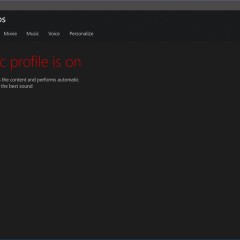
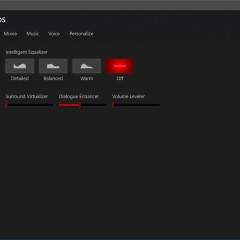

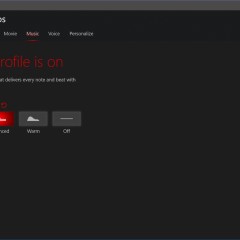

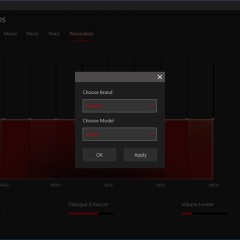

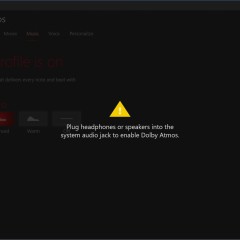
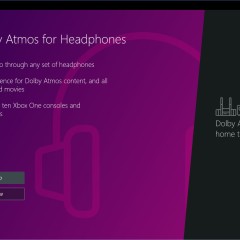
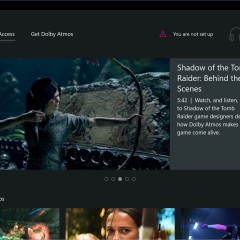


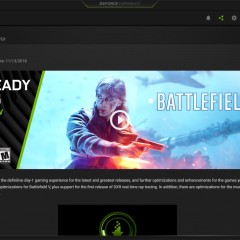
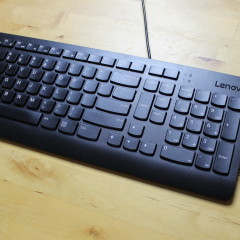
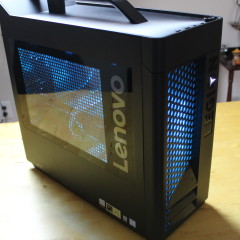

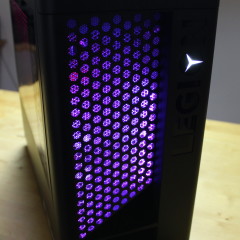
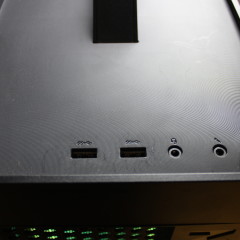
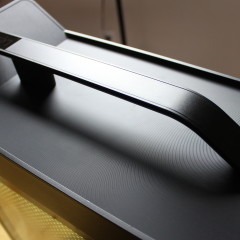
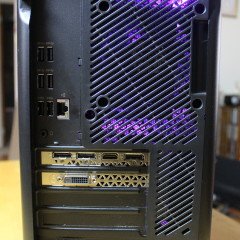
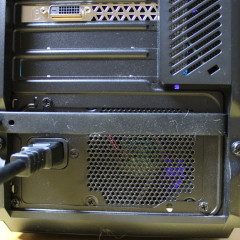
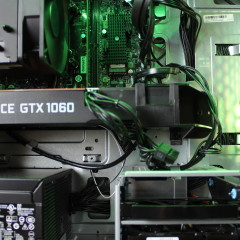
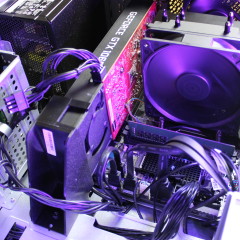
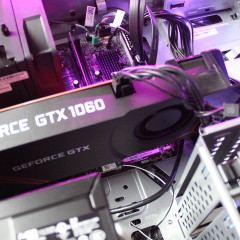
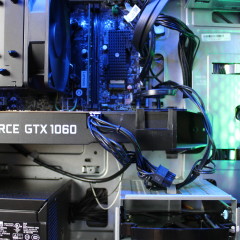
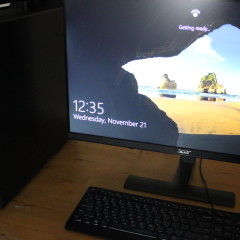
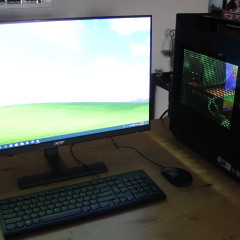
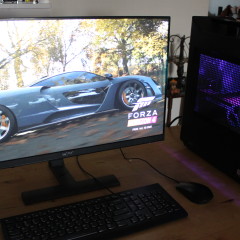
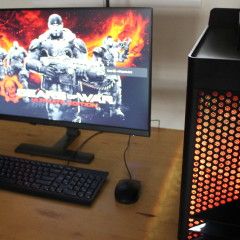
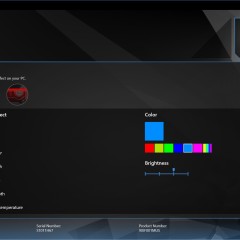
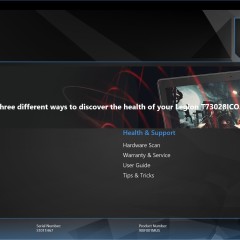
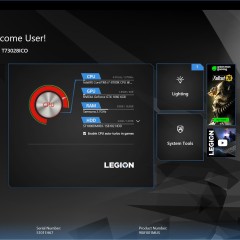
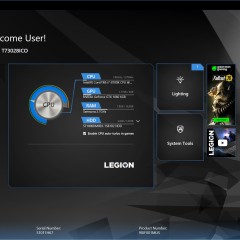








6 Comments - Add comment